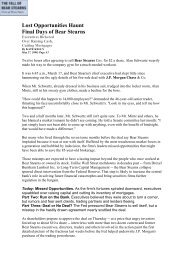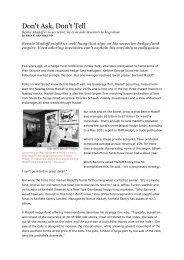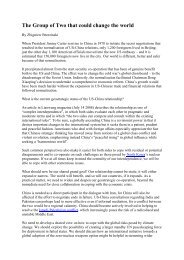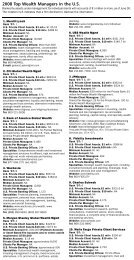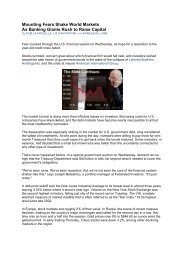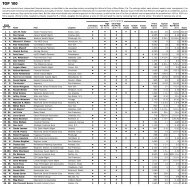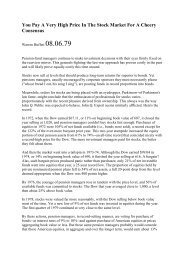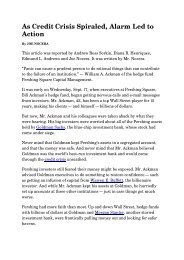PCE Deflator, (Personal Consumption Expenditure ... - Morningbull
PCE Deflator, (Personal Consumption Expenditure ... - Morningbull
PCE Deflator, (Personal Consumption Expenditure ... - Morningbull
Create successful ePaper yourself
Turn your PDF publications into a flip-book with our unique Google optimized e-Paper software.
AKA: Change in Non farm payrolls, New Job Creation, Payroll Data, Employment Rate,<br />
Unemployment Rate<br />
Unemployment Rate - United States<br />
The US Unemployment Rate reflects the percentage of people considered<br />
unemployed in the United States. Unemployment is the single most popularly used<br />
figure to give a snapshot of US labor market conditions. Because the Federal<br />
Reserve is under strict pressure to keep unemployment under control, high<br />
unemployment puts downward pressure on interest rates, as the Fed will look to<br />
bolster the economy to remedy the employment situation.<br />
More generally, unemployment is indicative of the economy's production, private consumption,<br />
workers' earnings, and consumer sentiment. A lower unemployment rate translates into more<br />
employed individuals with paychecks, which leads to higher consumer spending, economic<br />
growth and potential inflationary pressures. Conversely, high levels of unemployment are<br />
connected with lower incomes, lower spending, and economic stagnation.<br />
Note: The figure is calculated by dividing the number of unemployed individuals in the labor force<br />
by the total labor force. Technically, Unemployment Rate = (# Unemployed Persons in Labor<br />
Force) / (Total # Persons in Labor Force). Persons are considered unemployed if they are able<br />
and willing to work but without a job and have actively sought employment within the last 4 weeks.<br />
The labor force includes all employed and unemployed individuals 16 years and older. Thus<br />
Unemployment could technical alter based on changes in the number of people in the people in<br />
the workforce, or changes in the number of people looking for employment.<br />
Relevance: Moderate market impact<br />
Release schedule : 8:30 (EST); monthly, usually first Friday of every month,<br />
Revisions schedule : previous two months, can be major, benchmark changes every 10 years<br />
Source of report: Bureau of Labor Statistics, Department of Labor (U.S.)<br />
Web Address : http://www.bls.gov/home.htm<br />
Address of release : http://www.bls.gov/news.release/empsit.toc.htm




